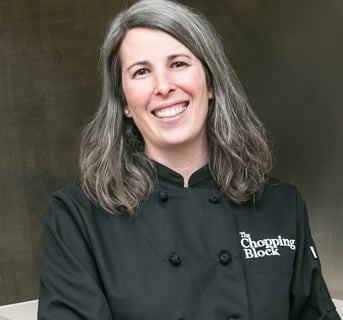My thirst for knowledge definitely drives the curriculum here at The Chopping Block. Recently, I’ve been craving to learn more about using underutilized cuts of beef... not only for my own education, but in order to create a new and informative class for our students.
Before creating Butcher's Cut: Beyond the Common Cut of Beef, I did quite a bit of research on the common beef primal cuts and the lesser-known cuts of beef that come from the various areas of the animal. I learned a great deal while doing my homework, and even put one of the recipes to the test to ensure we are offering the best possible experience for you.
Our new class features four cuts of beef from four different primals that are just as good (and maybe even better) than the classics! These cuts were chosen because they are favored by butchers for their superior flavor and great value. The menu includes:
- Roasted Coulotte (Sirloin Primal) with Compound Butter and Crispy Potatoes
- Grilled Flat Iron Steak (Chuck Primal) with Chimichurri
- Sautéed Hanger Steak (Plate Primal) with Green Peppercorn Cream Sauce
- Red Wine Braised Beef Shank (Shank Primal) with Carrots and Parsnips
The menu includes a variety of cooking techniques, but when it came to testing a recipe, I was in the mood for roasting. It was a chilly evening, and a beef roast was just what I was craving, so I chose to prepare the Coulotte. I'm so glad I did, because it was crazy good. It was melt-in-your-mouth tender, and had great, deeply beefy flavor. To procure this cut of meat, contact your local butcher shop and see if they can get it in for you. Our local butcher shop is Homestead Meats in Evanston, and because there are only two Coulottes per carcass, call at least a few days ahead of time reserve yours.
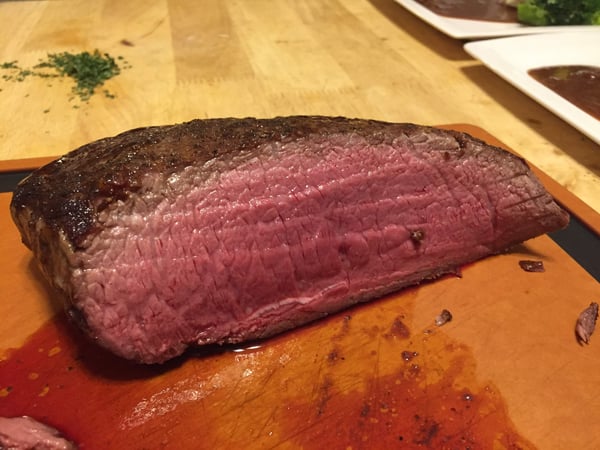
In doing my homework for this class, I learned that the Coulotte comes from the sirloin primal. This primal is separated into the Top Sirloin Butt and Bottom Sirloin Butt subprimals, with the Coulotte coming from the Top Sirloin Butt. The Coulotte is the flattish, cap-like piece of meat that covers the Top Sirloin Butt. You know what else I learned? Coulotte in French roughly translates to "panties" or “undies”, which makes sense considering it covers the “Butt”. This made me chuckle. Note: The Coulotte can go by other names such as top sirloin cap and picanha. The Picanha is a bit different in that the top is covered by the exterior fat layer, which is favored by South American gauchos.
Even if you're not familiar with the Coulotte, be rest assured that it's a very easy piece of meat to cook. It's just like roasting any other protein. This is how to make the perfect roast:
1. Allow the roast to sit out for at least 30 minutes, but up to 2 hours before cooking it.
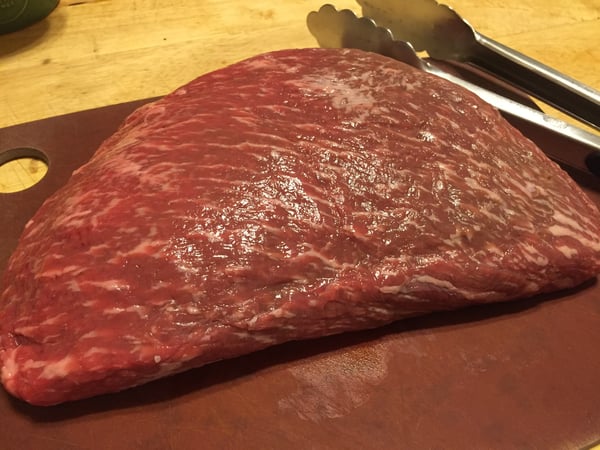
2. Preheat the oven to 350°.
3. Season the beef with salt and pepper on all sides.
4. Heat a pan over medium-high heat, and add a neutral cooking oil such as grapeseed oil.
5. Sear the beef in the hot pan until the first side is well caramelized. Flip and repeat.
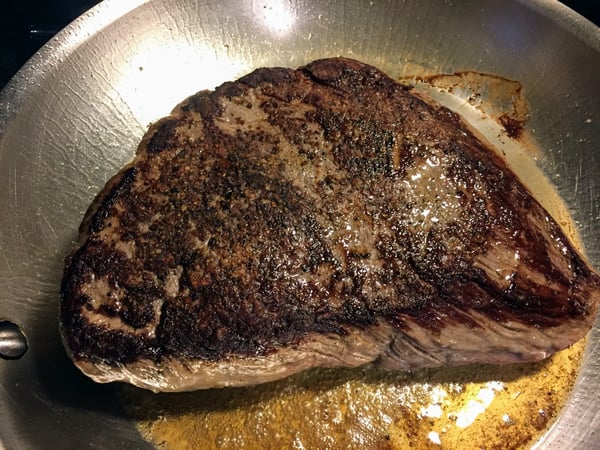
6. Transfer the beef to a rack set over a sheet tray, and roast until the internal temperature reads 125°. This is ideal for medium rare, which I like, but you can go up to 130° if you wish. I wouldn't recommend going any higher than this. Otherwise the thinner ends will become too overcooked.
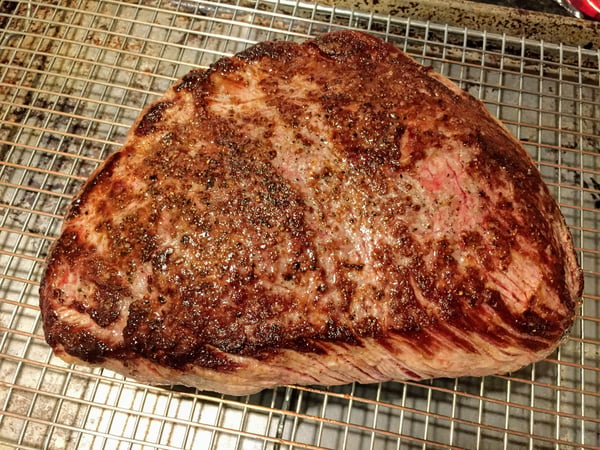
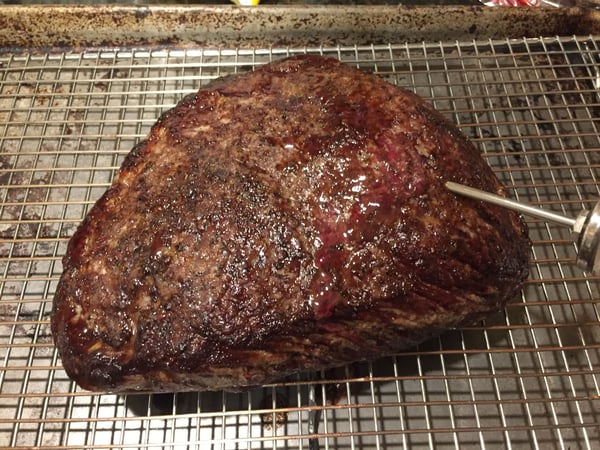
7. Transfer the beef to a cutting board with a juice groove, and allow to rest for 10 minutes.
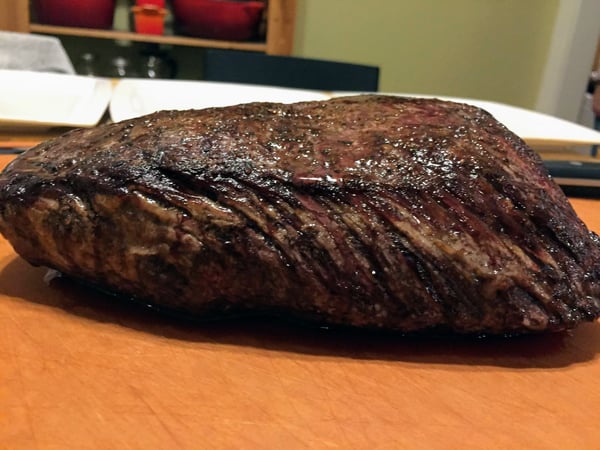
8. Using a sharp knife, cut the beef, against the grain, into 1/2-inch slices, and serve.
You can easily just stand around the cutting board, and eat the beef as is. It's seriously that good. My husband and I decided to make this a special dinner, so while I focused on the beef and drinking wine, he made ranch-flavored mashed potatoes and steamed broccoli with cheesy Mornay sauce.
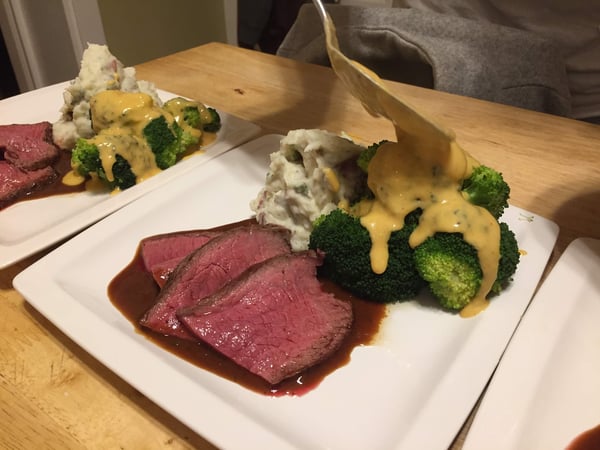
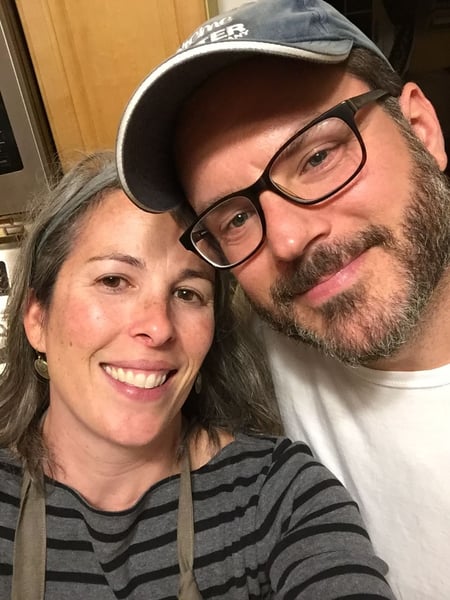
Learning about and cooking a cut of beef I was previously unfamiliar with was an empowering journey for me. It just goes to show you that no matter how many years of professional cooking experience you may have, it's important to always take a step back and be the student.
If you're ready to expand your culinary knowledge, and learn about different cuts of beef you may not be familiar with, be sure to enroll in our new class. There are only 5 seats available, and they will go quick!
We also have a pretty cool free resource if you are interested in trying more butchery at home. Download A Home Cook's Guide to Butchery.


